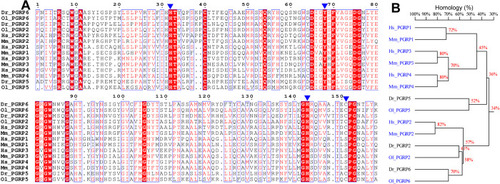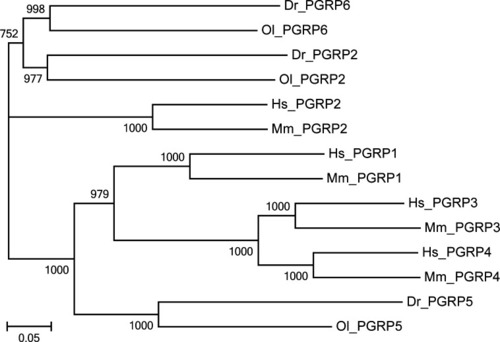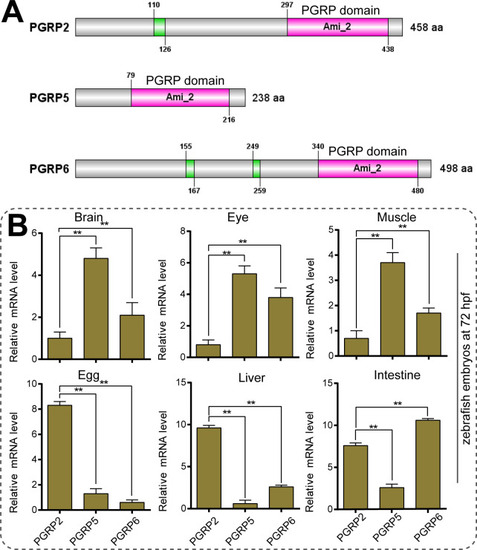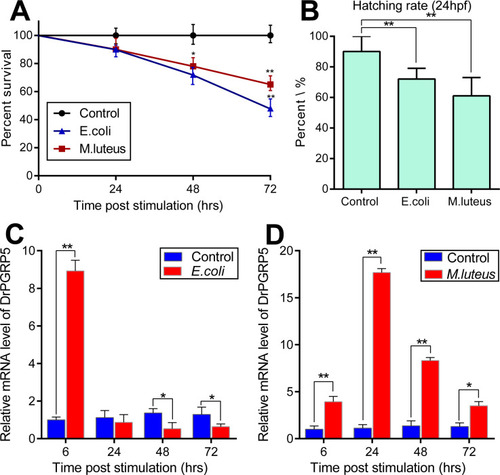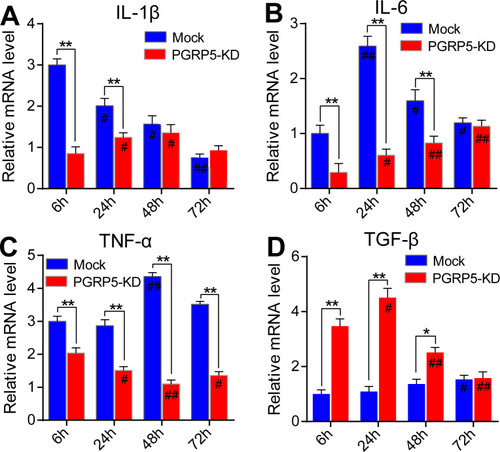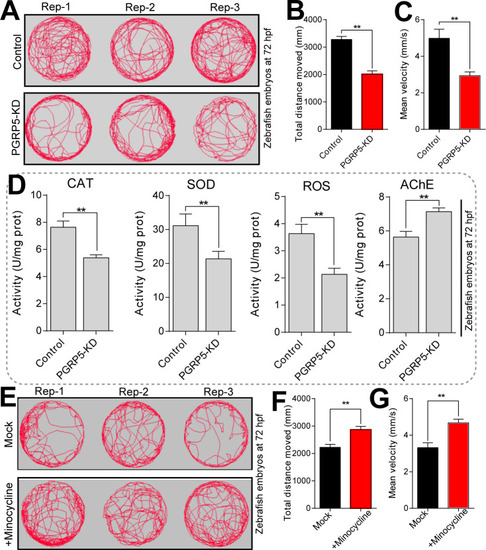- Title
-
Peptidoglycan recognition protein PGRP-5 is involved in immune defence and neuro-behavioral disorders in zebrafish embryos
- Authors
- Li, X., Xiong, G., Luo, M., Mao, S., Zhang, R., Meng, Z., Li, J., Liao, X.
- Source
- Full text @ PLoS One
|
Multiple alignments of C-terminal amino acid sequences contained conserved amidase domains in zebrafish ( (A) The multiple sequence alignment of PGRPs was presented. The conserved amino acid residues were shaded in red, and similar amino acids were marked with red characters. (B) The homology percentage of PGRPs gene sequences was presented. The protein sequences were listed as followed: Zebrafish (PGRP2: NP_001038631; PGRP5: NP_001037786; PGRP6:NP_001038687), ricefish (PGRP2: NP_004065551; PGRP5: NP_004075905; PGRP6:NP_004071889), human (PGRP1: NP_005082; PGRP2: NP_443122; PGRP3: NP_443123; PGRP4: NP_065126) and mouse (PGRP1: NP_033428; PGRP2: NP_067294; PGRP3: NP_997130; PGRP4: NP_997146). |
|
Phylogenetic tree analysis of DrPGRPs with other known PGRPs form various species. Phylogenetic tree was obtained from a CLUSTALW alignment and MEGA6 Neighbor-joining of 14 sequences. The number at each node indicates the bootstrap analysis from 1000 replicates. |
|
Structural characteristics and expression patterns of zebrafish PGRPs genes. (A) Schematic representations of the zebrafish PGRP structures. Characteristic domains and lengths of the amino acid sequences are indicated. The green boxes represent the low complexity region, and pink boxes stand for PGRP domains that contained a conserved N-acetylmuramoyl-L-alanine amidase (ami_2) region. (B) The mRNA expression levels of zebrafish PGRPs in different tissues. The relative transcript levels of DrPGRP2, 5, 6 in brain, eye, muscle, egg, liver and intestine were presented. The values in each group were presented as means ± SEM (Each value contains at least four biological replicates, and each biological replicate contains three technical replicates). For all experiments, * |
|
Zebrafish PGRP5 exhibits differential expression characteristics under different bacterial stimuli. (A) The survival rate of zebrafish embryos at 72 hpf after Gram-negative EXPRESSION / LABELING:
PHENOTYPE:
|
|
The pro-inflammatory cytokines were mainly inhibited but anti-inflammatory genes were significantly activated in zebrafish embryos under PGRP5-KD conditions. (A) The relative mRNA levels of EXPRESSION / LABELING:
PHENOTYPE:
|
|
PGRP5 plays an important role in neurobehavioral alteration and oxidative stress in zebrafish embryos. (A) The movement tracks of zebrafish at 5 dpf larvae that exposed to mock and PGRP5-KD conditions. Three representative photographs are shown in each group. (B) The total distance moved of zebrafish larvae that both in control and PGRP5-KD conditions. (C) The average velocity of zebrafish larvae that both in mock and PGRP5-KD conditions. (D) Detection the contents of ROS, along with enzymatic activities of CAT, SOD and AChE in larval zebrafish that both in mock and PGRP5-KD conditions. The values are presented as means ± SEM (Each value contains at least four biological replicates, and each biological replicate contains three technical replicates). *, PHENOTYPE:
|

